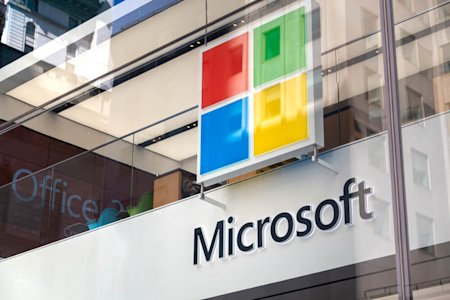For businesses and individuals alike, keeping software up to date is essential for minimizing risk, and Patch Tuesday ensures that known vulnerabilities are addressed in a timely manner.
It also helps organizations plan their security strategies, keeping their systems safe from potential threats. With cyberattacks on the rise, understanding and leveraging Patch Tuesday updates is more important than ever for maintaining strong cybersecurity postures.
What is Patch Tuesday?
Patch Tuesday is a term used to describe Microsoft's scheduled release of security patches, updates, and bug fixes. Occurring on the second Tuesday of every month, it has become a vital event for IT teams and cybersecurity professionals around the world. First introduced in 2003, Patch Tuesday was designed to provide users and organizations with a predictable and systematic way to maintain and secure their systems. These updates are not only critical for maintaining system performance but also play a crucial role in preventing security vulnerabilities from being exploited by cybercriminals.
The History and Origins of Patch Tuesday
Patch Tuesday was introduced by Microsoft in October 2003 as a direct response to the chaotic state of software updates during the early 2000s. Before its inception, Microsoft’s patch release schedule was erratic and unpredictable, leaving IT administrators scrambling to address vulnerabilities as they arose. This often led to critical security breaches, such as the infamous Code Red and Nimda worms in 2001, which caused widespread damage across networks globally.
To bring order to the process, Microsoft established a structured, monthly release cycle for its patches. By dedicating the second Tuesday of every month to releasing security updates and bug fixes, the company allowed IT teams and system administrators to better plan and manage their update strategies, reducing the risk of vulnerabilities being exploited.
Since its launch, Patch Tuesday has become a cornerstone of cybersecurity practices across industries. The day provides crucial updates for the Windows operating system and other Microsoft products like Microsoft Office, Microsoft Edge, and Visual Studio. Over time, Patch Tuesday has also influenced how other companies manage their patch cycles, reinforcing the importance of a structured approach to system updates.
Why Patch Tuesday is Critical for Cybersecurity
Patch Tuesday plays a pivotal role in enhancing the cybersecurity posture of both individuals and organizations by systematically addressing software vulnerabilities. As the primary mechanism for Microsoft to release security updates, this scheduled day ensures that known vulnerabilities in its products, such as Windows, Microsoft Office, and other essential software, are patched promptly to prevent exploitation by cybercriminals.
One of the most significant reasons Patch Tuesday is crucial for cybersecurity is that it helps mitigate the risk of zero-day vulnerabilities. These are flaws in software that cybercriminals can exploit before a patch becomes available. Microsoft’s timely patches, often addressing critical vulnerabilities, reduce the window of opportunity for attackers to exploit these weaknesses. Organizations that regularly apply Patch Tuesday updates are less likely to fall victim to such attacks, which have been responsible for high-profile breaches like the WannaCry ransomware attack.
For IT teams, the structured nature of Patch Tuesday offers a predictable schedule that enables them to plan, test, and deploy patches in a controlled manner. By doing so, they can ensure that systems remain secure without the risks that come with untested patches or rushed deployments. This routine also helps reduce operational disruptions and system downtime that could otherwise occur with unscheduled updates.
Moreover, Patch Tuesday plays a vital role in safeguarding against advanced persistent threats (APTs), where cybercriminals target known vulnerabilities to gain long-term access to systems. Regularly patching these vulnerabilities is essential to defending against these persistent attack vectors, ensuring that systems remain resilient to evolving threats.
Beyond addressing security concerns, Patch Tuesday also delivers important bug fixes and performance enhancements. These non-security updates contribute to the overall stability and efficiency of systems, further reinforcing why this monthly event is essential for maintaining secure and reliable infrastructure.
What Happens After Patch Tuesday? The Rise of Exploit Wednesday
While Patch Tuesday brings essential updates to fix vulnerabilities, the day immediately following—known as Exploit Wednesday—poses a significant cybersecurity risk. Exploit Wednesday refers to the period when attackers actively attempt to reverse-engineer the patches released on Tuesday to identify and exploit the vulnerabilities they address. Cybercriminals race to create and deploy malicious exploits before organizations fully implement the updates across their systems.
This race against time is critical. Once a patch is released, it becomes a guide for attackers to pinpoint the exact security holes being fixed. With sophisticated tools and techniques, cybercriminals can analyze the differences between the pre- and post-patch code to uncover vulnerabilities, enabling them to develop targeted exploits quickly. This is why some of the most dangerous cyberattacks happen shortly after Patch Tuesday, as was the case with the CitrixBleed vulnerability and other notable incidents.
Exploit Wednesday puts immense pressure on IT and cybersecurity teams. Organizations that delay applying patches leave themselves vulnerable during this critical window, which attackers can easily exploit. Therefore, prompt patching, especially of critical vulnerabilities, is essential to minimizing the risks associated with these emerging exploits.
The concept of Exploit Wednesday underscores the importance of timely patch deployment, sandbox testing of patches, and comprehensive security protocols. It also highlights the growing need for automated patch management tools that can accelerate patch rollouts and safeguard systems from opportunistic cyberattacks.
Best Practices for Patch Management
Effective patch management is critical for organizations to stay secure and minimize the risk of vulnerabilities being exploited. While Patch Tuesday offers a predictable schedule for releasing updates, it's essential to implement a comprehensive patch management strategy to ensure that updates are applied efficiently and securely. Here are some best practices for managing patches effectively:
1. Establish a Routine Patch Management Policy
One of the cornerstones of effective patch management is having a well-defined policy. This policy should outline how and when patches will be deployed, who is responsible for managing the process, and which systems need prioritization. Clear guidelines ensure that everyone in the organization understands the patching process, reducing the risk of oversight or mismanagement.
2. Prioritize Patches Based on Risk
Not all patches are created equal. Some updates address critical vulnerabilities that could allow attackers to gain control of systems, while others may be minor bug fixes. It's important to prioritize patches based on the risk they pose to your systems. High-risk vulnerabilities—such as those that could lead to data breaches or system takeovers—should be addressed immediately. Using a risk-based approach ensures that the most critical vulnerabilities are patched first.
3. Test Patches Before Deployment
Before deploying patches organization-wide, testing them in a controlled environment is essential. Patches can sometimes introduce new issues or cause compatibility problems with existing software. By testing updates in a sandbox or on a small subset of devices, IT teams can ensure that the patch works as intended without disrupting business operations.
4. Use Automated Patch Management Tools
Manual patching can be time-consuming and prone to errors, especially in large organizations. Automated patch management tools can help streamline the process by automatically detecting which systems need updates and deploying patches across all devices. These tools also offer scheduling options, so patches can be applied during off-hours to minimize disruption.
5. Communicate Patch Schedules and Changes
Effective communication is key to ensuring that patches are deployed successfully. IT teams should keep stakeholders informed about upcoming patches, potential system downtimes, and any changes that may occur as a result of the update. Clear communication helps prevent confusion and ensures that everyone is prepared for the patching process.
6. Monitor and Verify Patch Deployment
Once patches are deployed, it's important to monitor their performance and verify that they have been applied successfully across all systems. This can be done by using tools that track patch status and by conducting post-deployment tests to ensure that vulnerabilities have been properly addressed.
7. Maintain an Inventory of All Assets
A comprehensive asset inventory helps ensure that all systems, devices, and software are included in the patching process. This inventory should cover everything from desktop computers and mobile devices to servers and network equipment. By keeping track of all assets, organizations can ensure that nothing is left unpatched.
By following these best practices, organizations can reduce their risk of being exploited by attackers who target unpatched vulnerabilities. A structured patch management strategy ensures that systems remain secure, up-to-date, and protected against emerging threats.
The Benefits of Patch Tuesday for IT Teams
Patch Tuesday is not just an essential event for ensuring cybersecurity, but it also offers significant benefits to IT teams by providing structure, predictability, and efficiency in managing system updates. Here are the key benefits that IT teams gain from Patch Tuesday:
1. Predictability and Planning
The predictable nature of Patch Tuesday allows IT teams to plan their patching efforts well in advance. Since updates are released on the second Tuesday of every month, teams can schedule time for testing, deploying, and monitoring patches in a controlled manner.
2. Streamlined Patch Deployment
With a fixed schedule, IT departments can implement efficient workflows around Patch Tuesday. Automated tools can be set to check for updates as soon as they are released, enabling patches to be deployed quickly across all systems. This automation reduces manual work and the chance of human error while ensuring that all devices, including remote ones, receive the necessary updates.
3. Reduced Downtime
The regularity of Patch Tuesday enables IT teams to reduce system downtime. By knowing when patches are coming, teams can schedule updates during non-peak hours or weekends, minimizing disruptions to business operations. This also allows teams to inform stakeholders of potential service interruptions in advance, making the patching process more efficient and less disruptive.
4. Centralized Update Management
Patch Tuesday helps IT teams centralize their patch management efforts. By consolidating updates for multiple Microsoft products, including Windows, Office, and other applications, Patch Tuesday allows teams to apply necessary fixes across different software ecosystems simultaneously.
5. Improved Security Posture
By adhering to Patch Tuesday updates, IT teams can significantly enhance their security posture. Patching known vulnerabilities quickly reduces the risk of cyberattacks and data breaches. Teams can focus on mitigating critical threats first, knowing that Patch Tuesday helps address the most pressing security issues.
6. Easier Compliance with Regulatory Standards
Many industries, such as healthcare and finance, are subject to strict regulatory requirements that mandate timely updates for security. Patch Tuesday ensures that organizations stay compliant by offering a predictable way to apply patches that address known vulnerabilities. IT teams can easily document the deployment of security updates to demonstrate adherence to regulations like GDPR, HIPAA, or PCI-DSS.
Conclusion
Patch Tuesday is more than just a routine release of software updates—it’s a vital part of maintaining a strong cybersecurity posture. By providing a predictable schedule for security patches and bug fixes, Patch Tuesday allows organizations and IT teams to plan, prioritize, and apply critical updates in a timely manner. This monthly event helps mitigate the risks associated with zero-day vulnerabilities and other security threats, protecting systems from exploitation.
In today’s increasingly remote and distributed work environments, the importance of Patch Tuesday cannot be overstated. It plays a key role in securing remote desktops, cloud-based services, and network infrastructure. For IT teams, it offers a structured, efficient approach to managing updates while minimizing downtime and ensuring compliance with industry regulations.
Automate Your Patch Management Beyond Patch Tuesday
Waiting for Patch Tuesday isn’t enough—effective cybersecurity requires continuous monitoring and timely updates. Splashtop's patch management solution automates patch deployment for operating systems and third-party applications, reducing security risks while keeping your systems up to date.
With policy-driven updates, real-time monitoring, and seamless integration with Splashtop’s remote IT tools, you can stay ahead of vulnerabilities and ensure business continuity.





